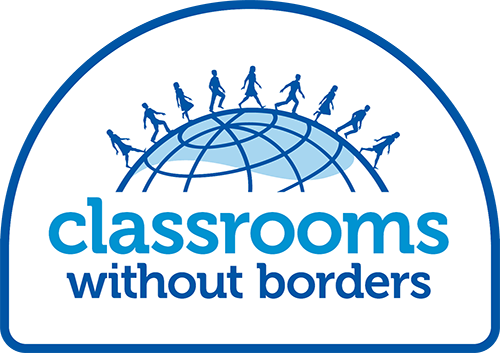Today we got to go shopping at the mall. We ventured into stores that we had never seen before but reminded us of some of our favorite stores at home. We enjoyed pita bread and falafels at a café and it was so good we ate a little too much – we even felt a little sick. Some of us got some fresh, delicious juice for refreshment.
 We returned to the village and prepared for our daytrip with the mishpachtons – the whole village was doing an outing to the Agamon Hula Ornithology and Nature Park. When we first arrived at the sanctuary we ate lunch with the families while admiring the beautiful lake view. After lunch, we got onto a tractor which drove us around for a tour of the fields. Our guide spoke mostly Hebrew, but we were able to understand a lot of what he was talking about as we watched hundreds of birds stand and fly in front of us. We learned a lot about the ecosystem and that the park is in one of the most significant bird migration routes in the world! Everyone was so mesmerized by how majestic the birds looked as they stood on the grass – and everyone cheered when they flew away!
We returned to the village and prepared for our daytrip with the mishpachtons – the whole village was doing an outing to the Agamon Hula Ornithology and Nature Park. When we first arrived at the sanctuary we ate lunch with the families while admiring the beautiful lake view. After lunch, we got onto a tractor which drove us around for a tour of the fields. Our guide spoke mostly Hebrew, but we were able to understand a lot of what he was talking about as we watched hundreds of birds stand and fly in front of us. We learned a lot about the ecosystem and that the park is in one of the most significant bird migration routes in the world! Everyone was so mesmerized by how majestic the birds looked as they stood on the grass – and everyone cheered when they flew away!
Finally, as the sun started setting, it was time to leave and go back to the village, since we had to get ready for Shabbat with our families. That evening, some of the kids switched places with their parents, which meant that they were in charge to read the prayer, clean and help cook the dinner. After some delicious food, we went dancing with some of our families, which was so much fun. When we went back to our rooms, some of the teens came over for some more karaoke!



What is the he biggest difference between the teens of the village and the teens in the United States?
Annie – The most interesting difference is that they have to join the army at some point when they turn 18 and we don’t. The teens can choose to take a gap year if they have good grades to volunteer or they can choose to go to college before they must join the army, which is for three years. When they enlist in the army they can petition for particular jobs there, but they are sometimes just assigned where they are needed most.
Emily – I think the most interesting difference is that most of them value school more than we do. It is evident that the students in Israel have a desire to learn when they get to school. Also, they have a lot more riding on their good grades. A student in America is able to get in at least one college and receive an education, but Israeli teens’ grades determine their future in the army and beyond.
Olivia – The most interesting difference is that teens have to choose earlier on in their schooling (early years of high school) what their major will be. We don’t have to do that till we are in collage and much older than them.
Sophia – The most interesting difference is that in the U.S. high schoolers is that toward the end of high school we try to prepare for college and do well, while Israeli kids have to wait to go to college until they have finished their 3 year service in the IDF.
Hanna – The most interesting difference between us is that Israeli kids learn English and Arabic in school and they actually get really good at speaking it, while we don’t usually get to practice languages other than English outside of school.
Bella – One of the biggest differences I noticed between American teens and the children in the village is that they don’t have anything after schools. They don’t have any sports or art related activities (probably because these cost money in Israel). In America a lot of kids have after school activities.
